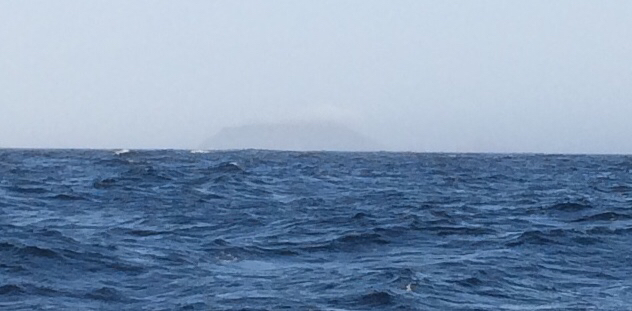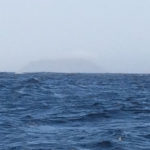We had a great time in Campbell River Marina, despite catching a bit of a cold and being laid up in bed for a bit.
The town had a great museum, with a lot on the history of logging. Around here you would have either been a fisherman or a logger, or if you were really wise, someone who sold fishing and logging tackle. There’s also a lot of information on First Nations (which is what the aboriginal indigenous population like to be known as) and their history.
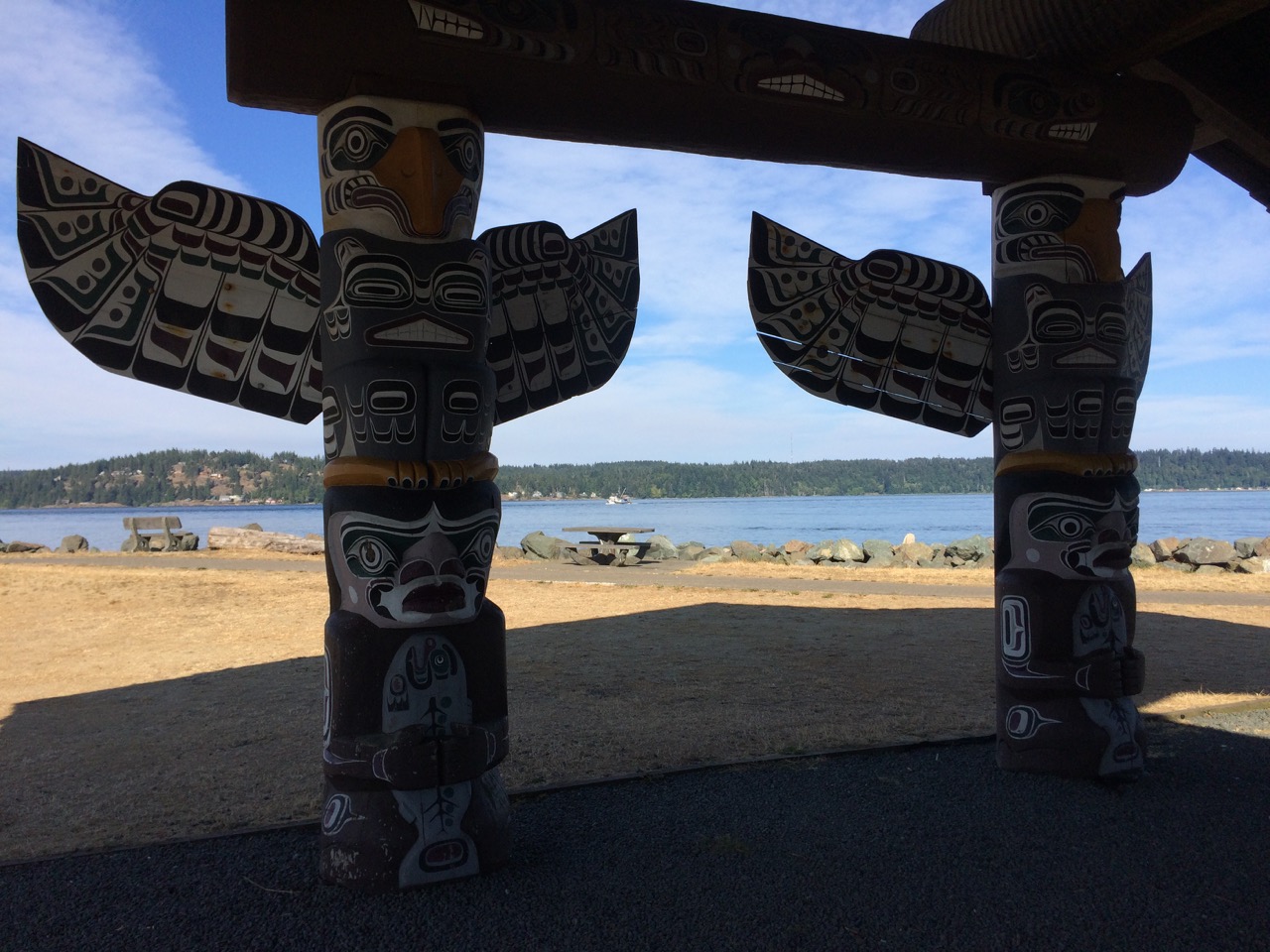
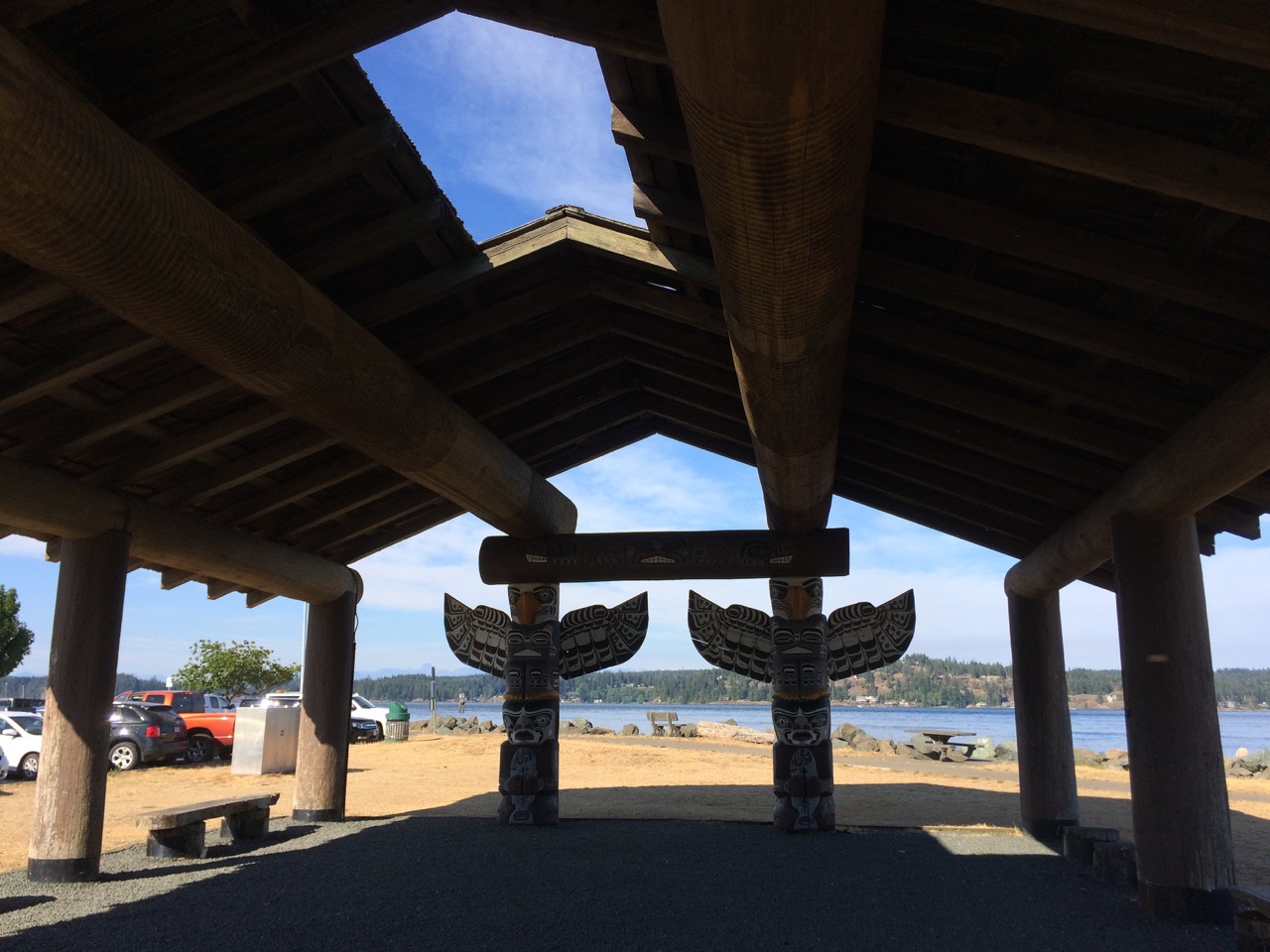
Campbell harbour had a great chandlery, however I’m not rich enough to take advantage of it, Also everything I saw in there that I was familiar with, I knew was cheaper on the net and could at least wait until I reached Seattle to see what it cost there. They had Sealant at $50, I normally pay £15, so it was quite a hike. However it’s great to see stuff you can’t get elsewhere, and also being in Asia for so long, where outside of Singapore and Hong Kong, there aren’t really any chandlers makes these places seem amazing.
However further down into town there was a more mom and pop type chandler, catering more to the fishing fleet, they had great stuff, and I picked up a roll of polypropylene rope, 600ft for just $70 (CAD) This will be used for long stern ties, when we need to take a line ashore.
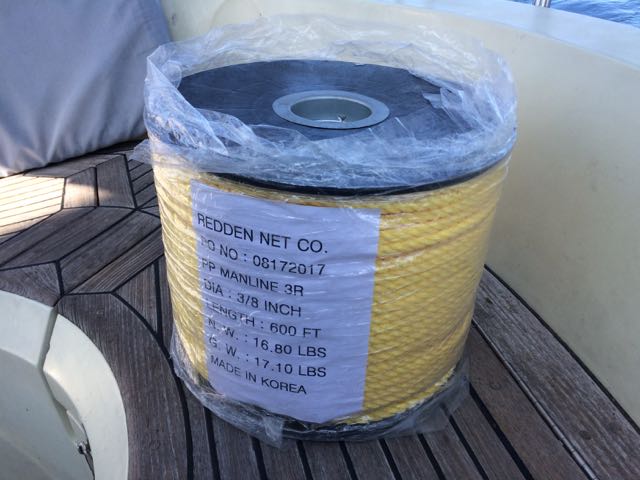 My cold caused us to stay an extra day there, before we departed on Thursday for Tribune Bay Marine Park on Hornby Island. Another beautiful location, however we were not alone in this large sandy bay, I counted about 40 Sailboats and even more powerboats plus a few mega yachts. We decided not to go ashore, as it was very crowded, and instead I cooked some halibut I had bought on the dock in Campbell River, on the barbecue here and we had a lazy day.
My cold caused us to stay an extra day there, before we departed on Thursday for Tribune Bay Marine Park on Hornby Island. Another beautiful location, however we were not alone in this large sandy bay, I counted about 40 Sailboats and even more powerboats plus a few mega yachts. We decided not to go ashore, as it was very crowded, and instead I cooked some halibut I had bought on the dock in Campbell River, on the barbecue here and we had a lazy day.

 The passage there was easy except for the first hour, after leaving the marina in still winds, and flat calm water we hit Discovery Passage fighting a flood tide, at maximum flood. I hadn’t paid much attention to it, perhaps I was a bit smug about it all after waltzing through Seymour Narrows, and all the warnings I had read about this pass were minor in comparison. Also the weather was calm, and the tides were small, so what could go wrong, well I think I picked the wrong course as well as the wrong time, I was heading down the centre of the strait, the sides might have been better, but Cape Mudge, which is famous for causing rapids and rip tides was on the far side and I wanted to avoid that, and staying close to the Main Island would add a bit of distance. So it was that I found myself at first being driven off course, then headed by 3 knots of current, which quickly rose to 5 knots. Looking at the track I recorded below you can see what a mad course we made, the distance was less than a mile, but took more than an hour. All the time I thought I was steering a straight course. I suppose the waters had the last laugh with me.
The passage there was easy except for the first hour, after leaving the marina in still winds, and flat calm water we hit Discovery Passage fighting a flood tide, at maximum flood. I hadn’t paid much attention to it, perhaps I was a bit smug about it all after waltzing through Seymour Narrows, and all the warnings I had read about this pass were minor in comparison. Also the weather was calm, and the tides were small, so what could go wrong, well I think I picked the wrong course as well as the wrong time, I was heading down the centre of the strait, the sides might have been better, but Cape Mudge, which is famous for causing rapids and rip tides was on the far side and I wanted to avoid that, and staying close to the Main Island would add a bit of distance. So it was that I found myself at first being driven off course, then headed by 3 knots of current, which quickly rose to 5 knots. Looking at the track I recorded below you can see what a mad course we made, the distance was less than a mile, but took more than an hour. All the time I thought I was steering a straight course. I suppose the waters had the last laugh with me.
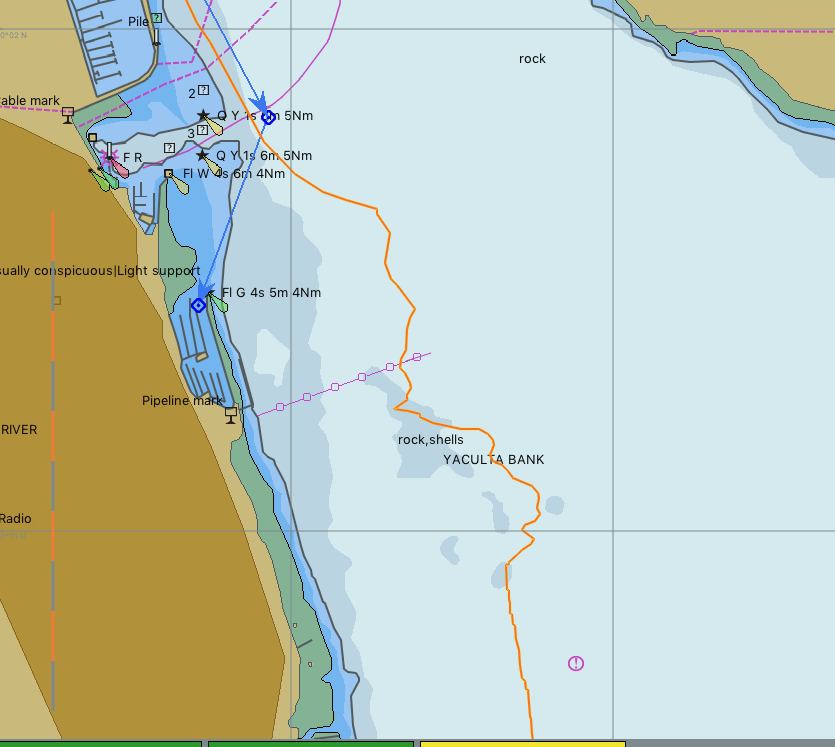
Today we left the quickly emptying bay on Hornby Island after a very restful night and headed for the public harbour at French Creek. I phoned ahead to see if they would be full, and typically I was told, no problem, they are always full but just turn up and raft to another boat, there’s loads of room for rafting. Rafting is tying alongside another boat, In this case, I expect all the berths are in use by fishing boats which can’t get out until the fisheries are opened, so they basically form a wider dock for us. I like the way people here aren’t so precious about their boats/space and rafting is normal.
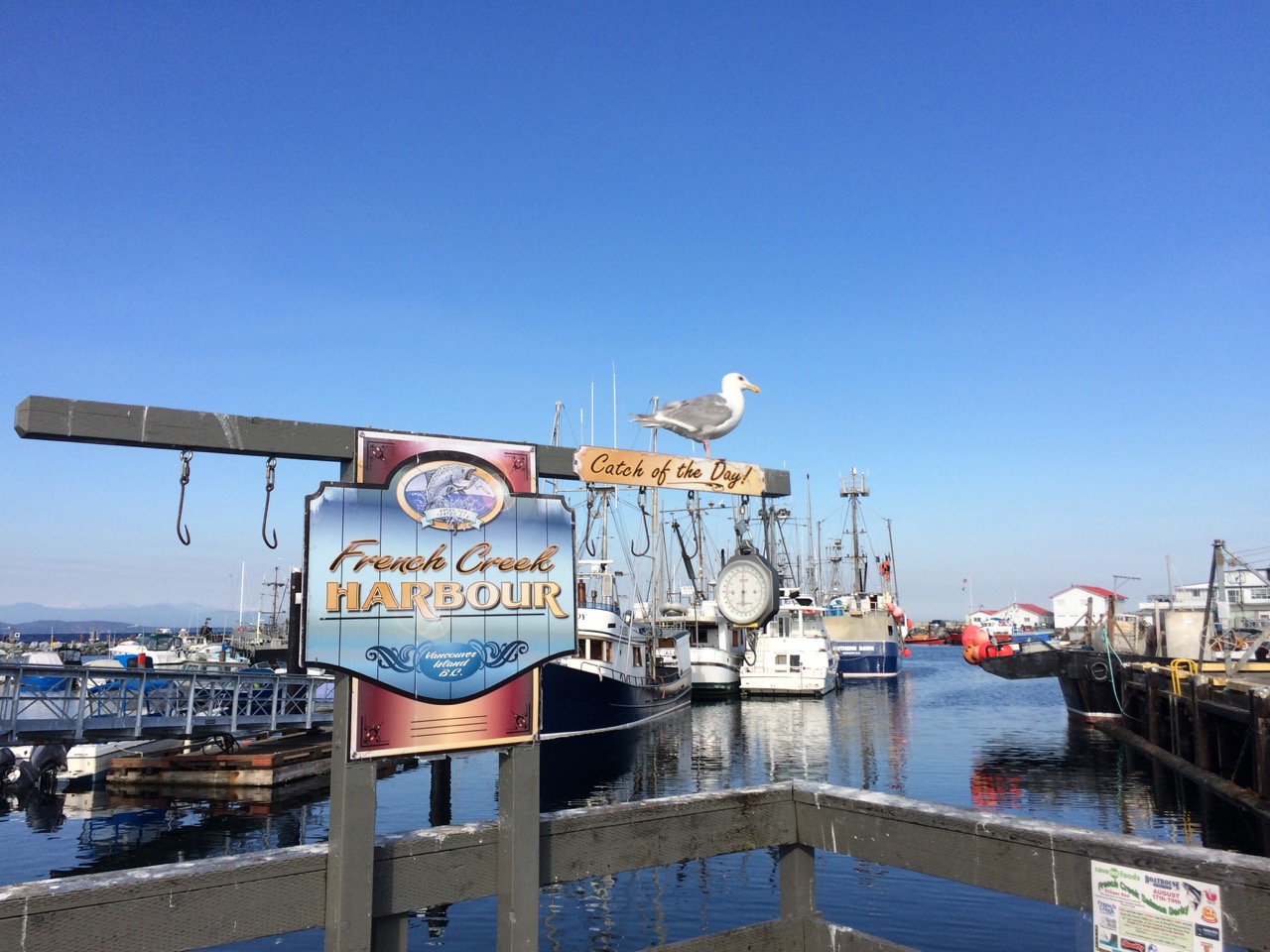 We are now tied up alongside another yacht in French Creek harbour, There’s lots of old sailboats dumped here, and lots of rough looking power boats, along with a stack of fishing boats. It’s pleasant enough, and we are only here for one night. My neighbours, locals, have taken a great interest in us and I have spent ages now explaining to all and sundry in the vicinity what it’s like to sail across the pacific. Everybody seems to be in awe, yet they all have big boats capable of doing the passage, yet they are afraid of leaving the inside passage in their yachts and even going up the west / Pacific side of this island.
We are now tied up alongside another yacht in French Creek harbour, There’s lots of old sailboats dumped here, and lots of rough looking power boats, along with a stack of fishing boats. It’s pleasant enough, and we are only here for one night. My neighbours, locals, have taken a great interest in us and I have spent ages now explaining to all and sundry in the vicinity what it’s like to sail across the pacific. Everybody seems to be in awe, yet they all have big boats capable of doing the passage, yet they are afraid of leaving the inside passage in their yachts and even going up the west / Pacific side of this island.
Tomorrow we leave early for the 4-5 hour passage to Nanaimo, which is quite a big town, the harbour is protected by two islands, one is called Newcastle island after the UK place, and was the location of a coal mine, just like it’s UK origins.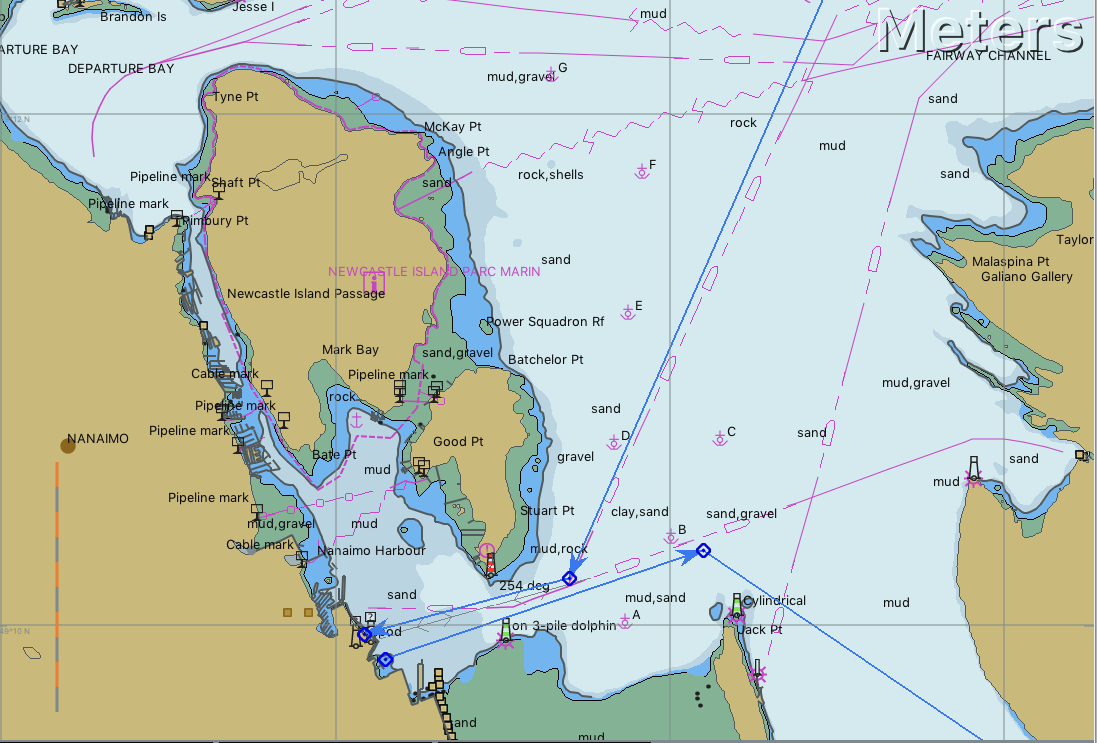 I’m hoping we can pick up a parks mooring buoy off the island for a small charge and dinghy into town. the island is now a national park and apparently is well worth a visit.
I’m hoping we can pick up a parks mooring buoy off the island for a small charge and dinghy into town. the island is now a national park and apparently is well worth a visit.

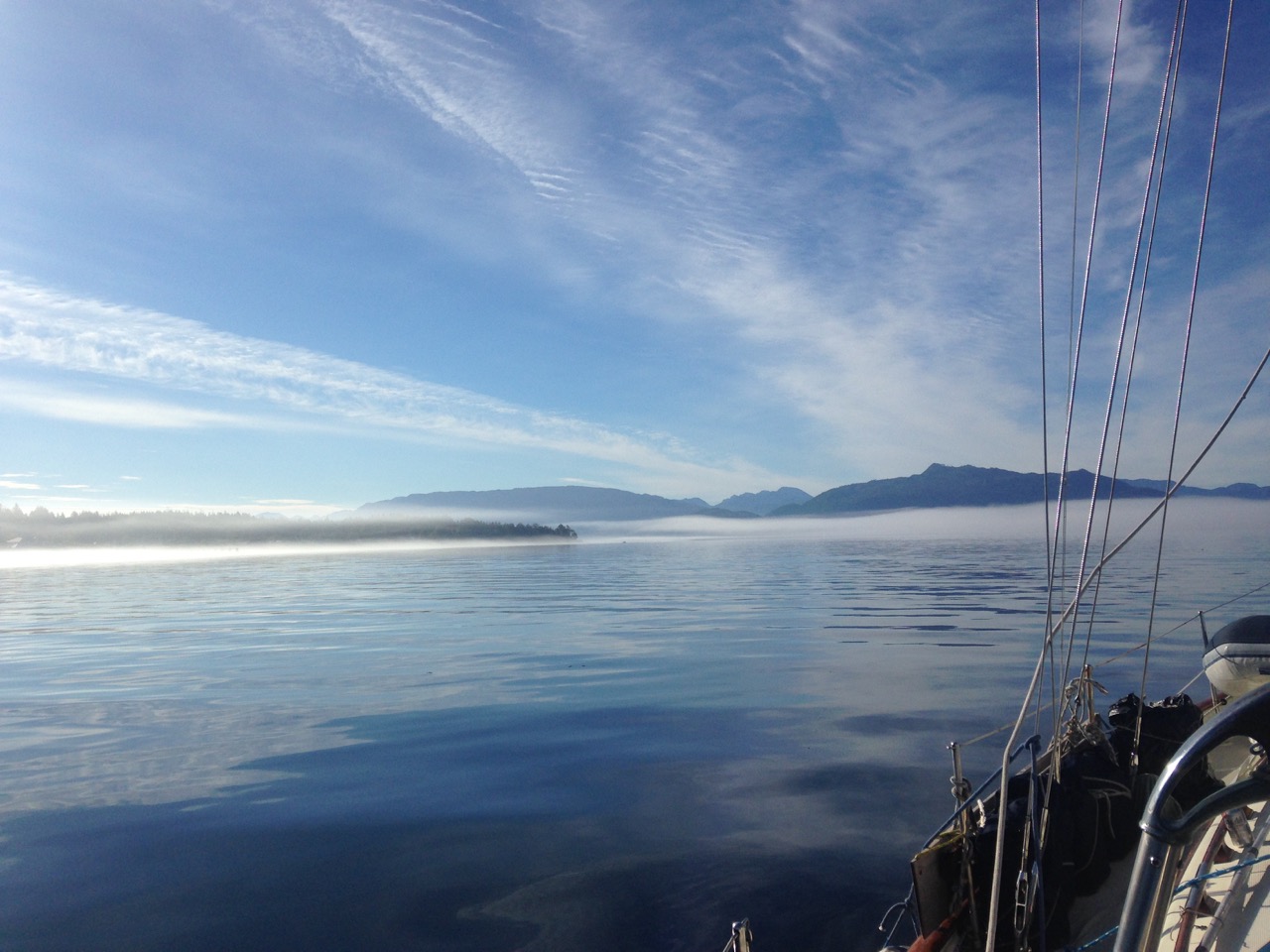
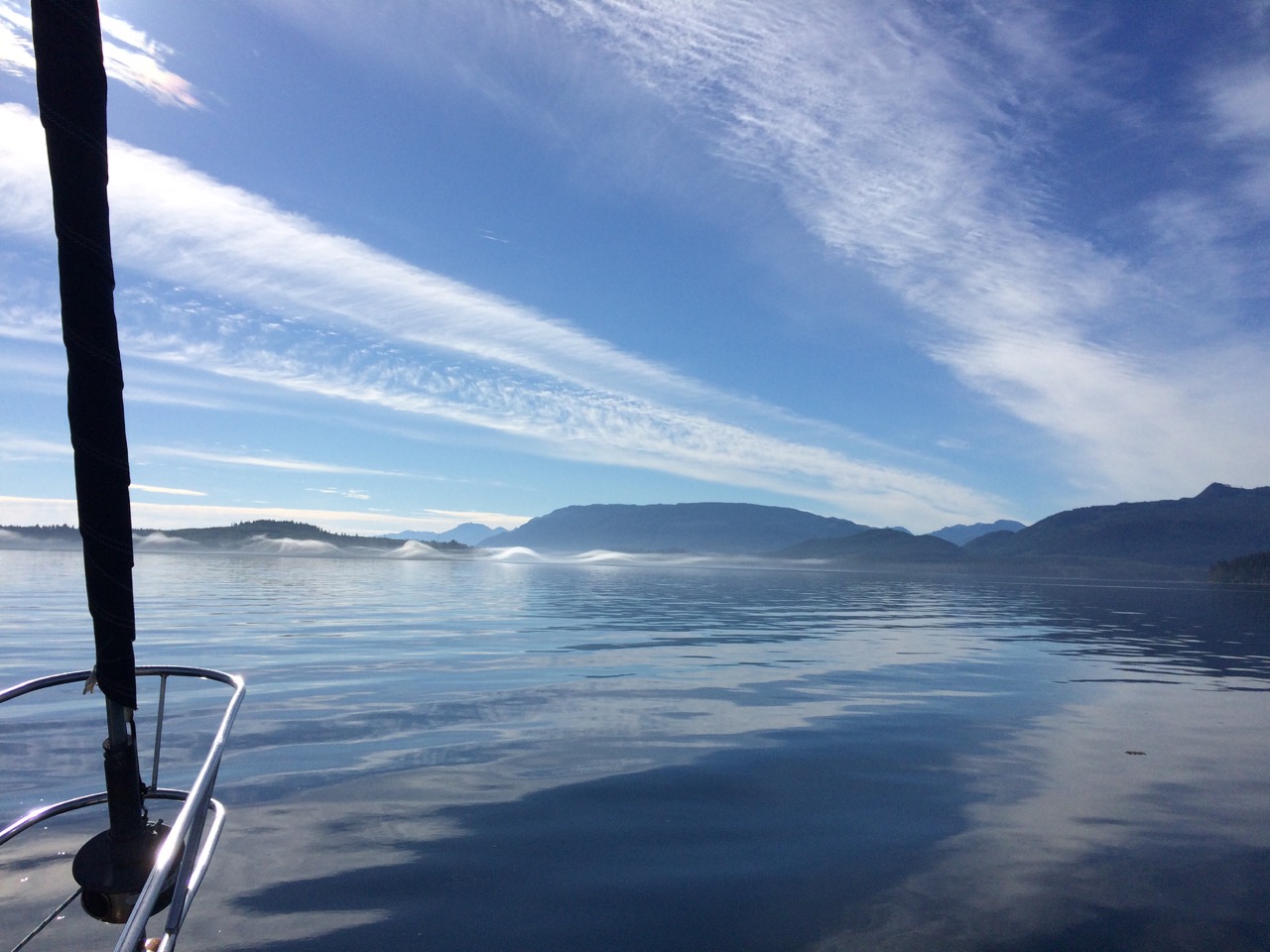 The inter-island ferry
The inter-island ferry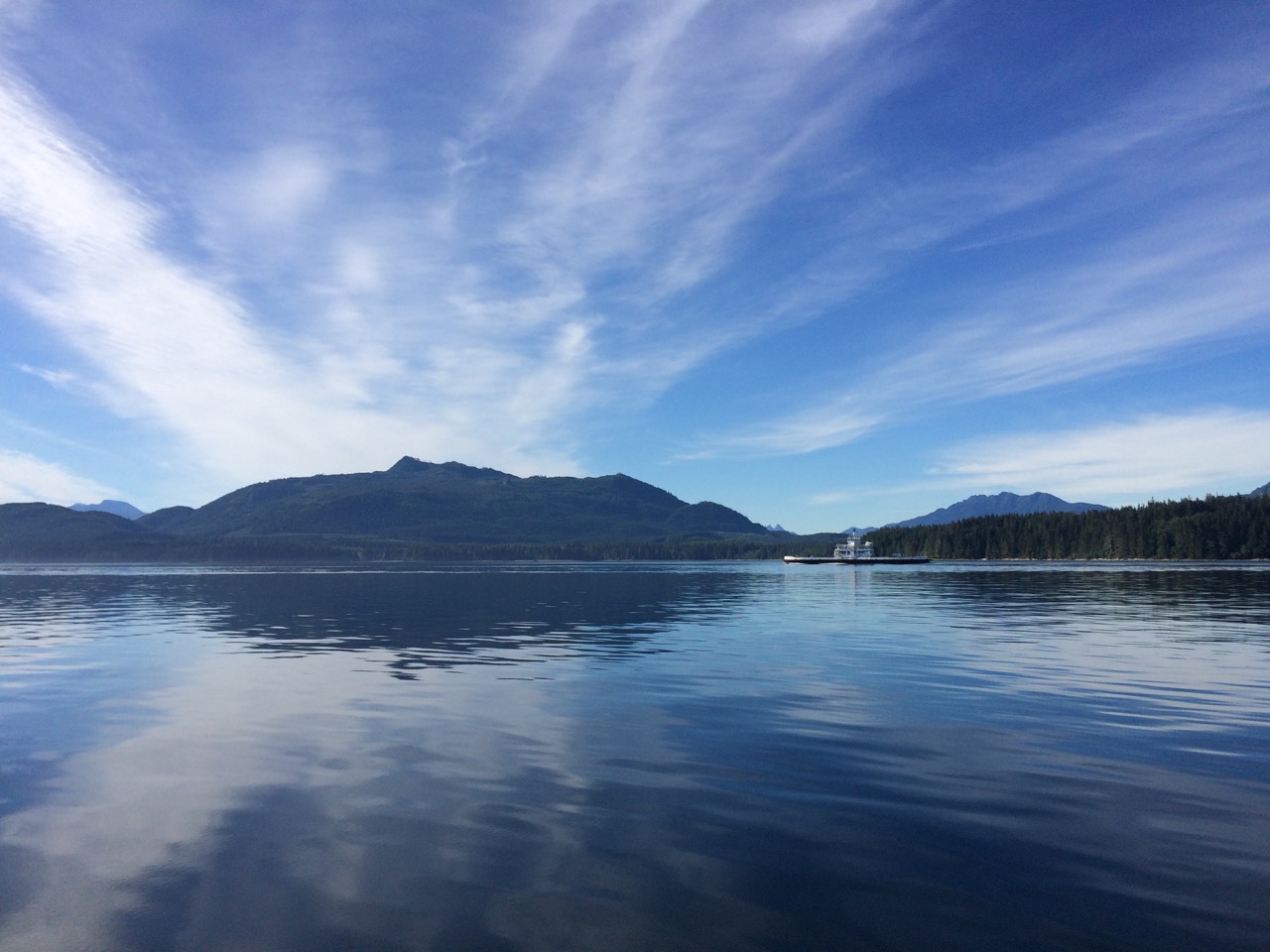
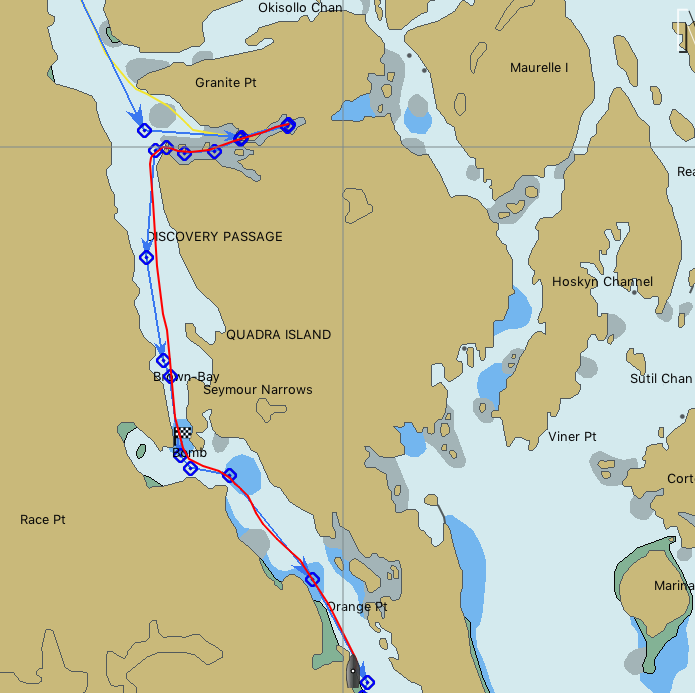
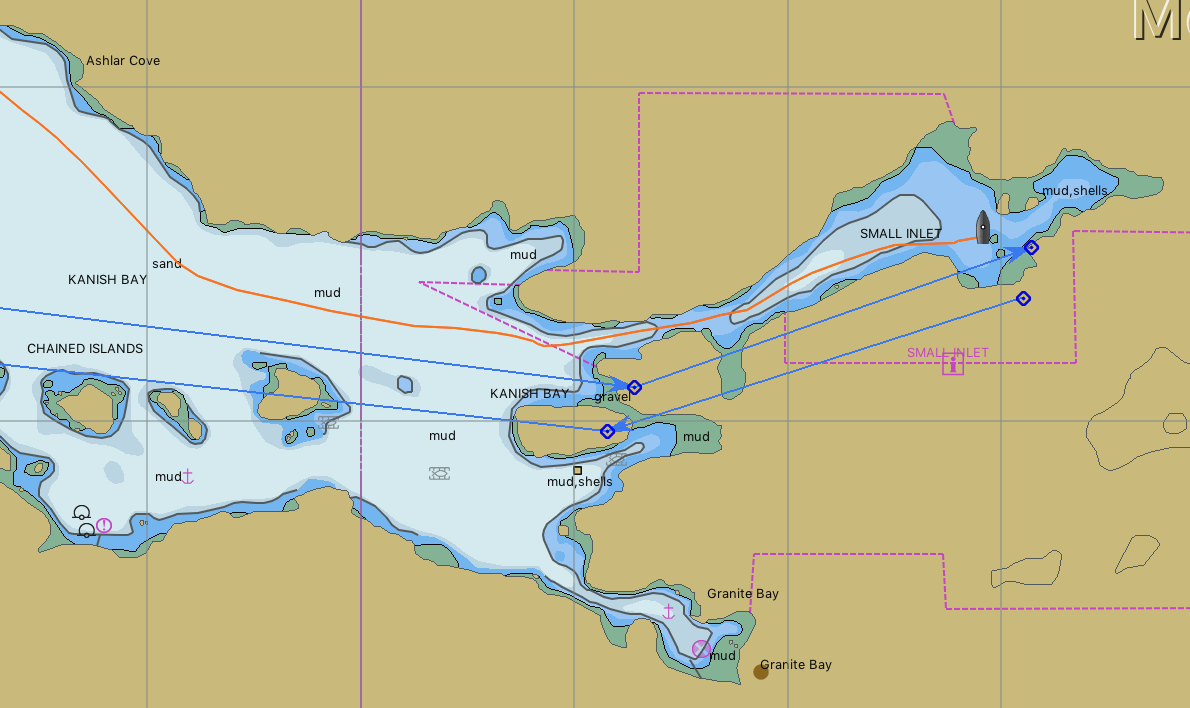 We spent the night here, and this must have been our most peaceful night in many months.
We spent the night here, and this must have been our most peaceful night in many months.


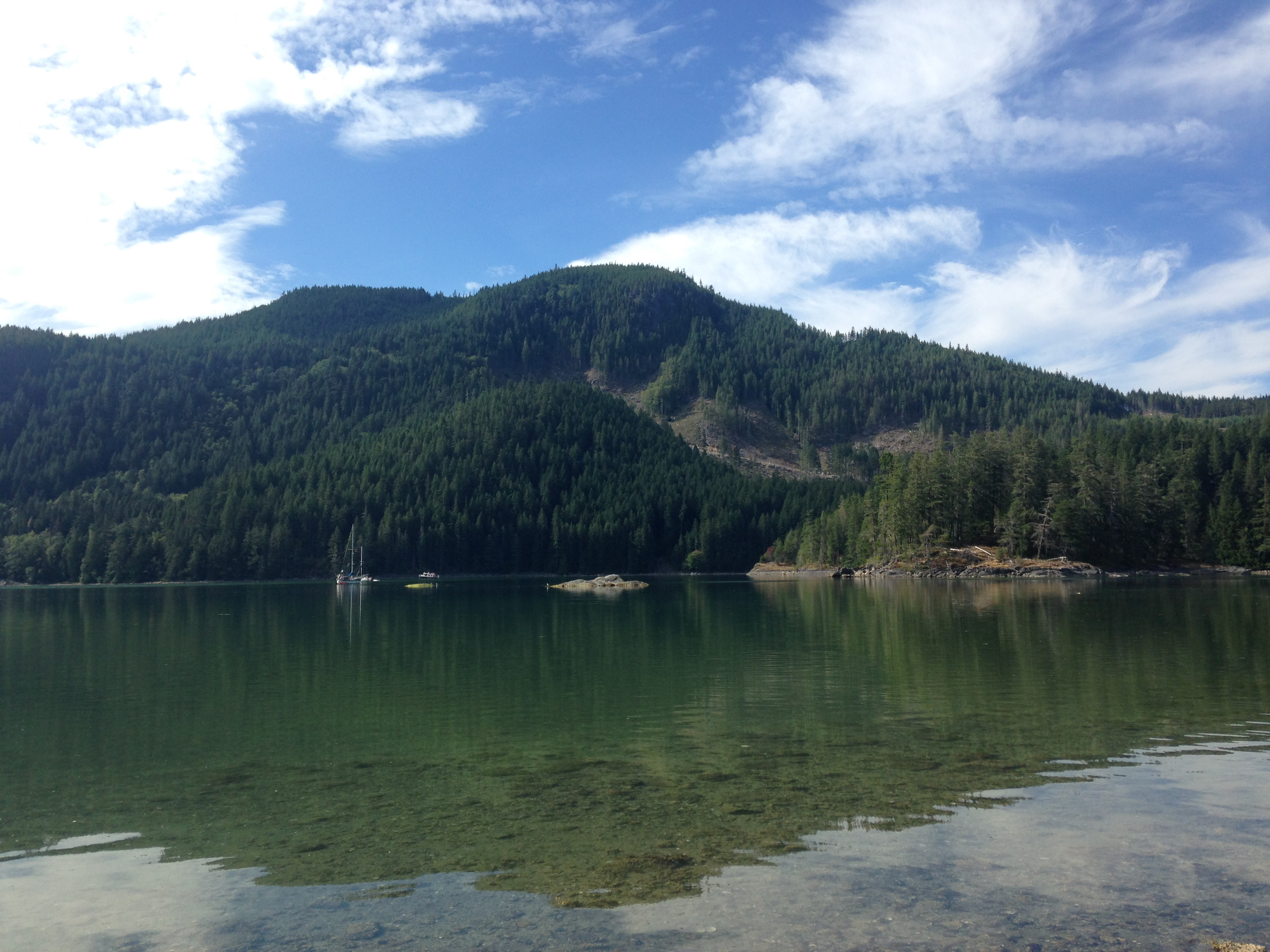
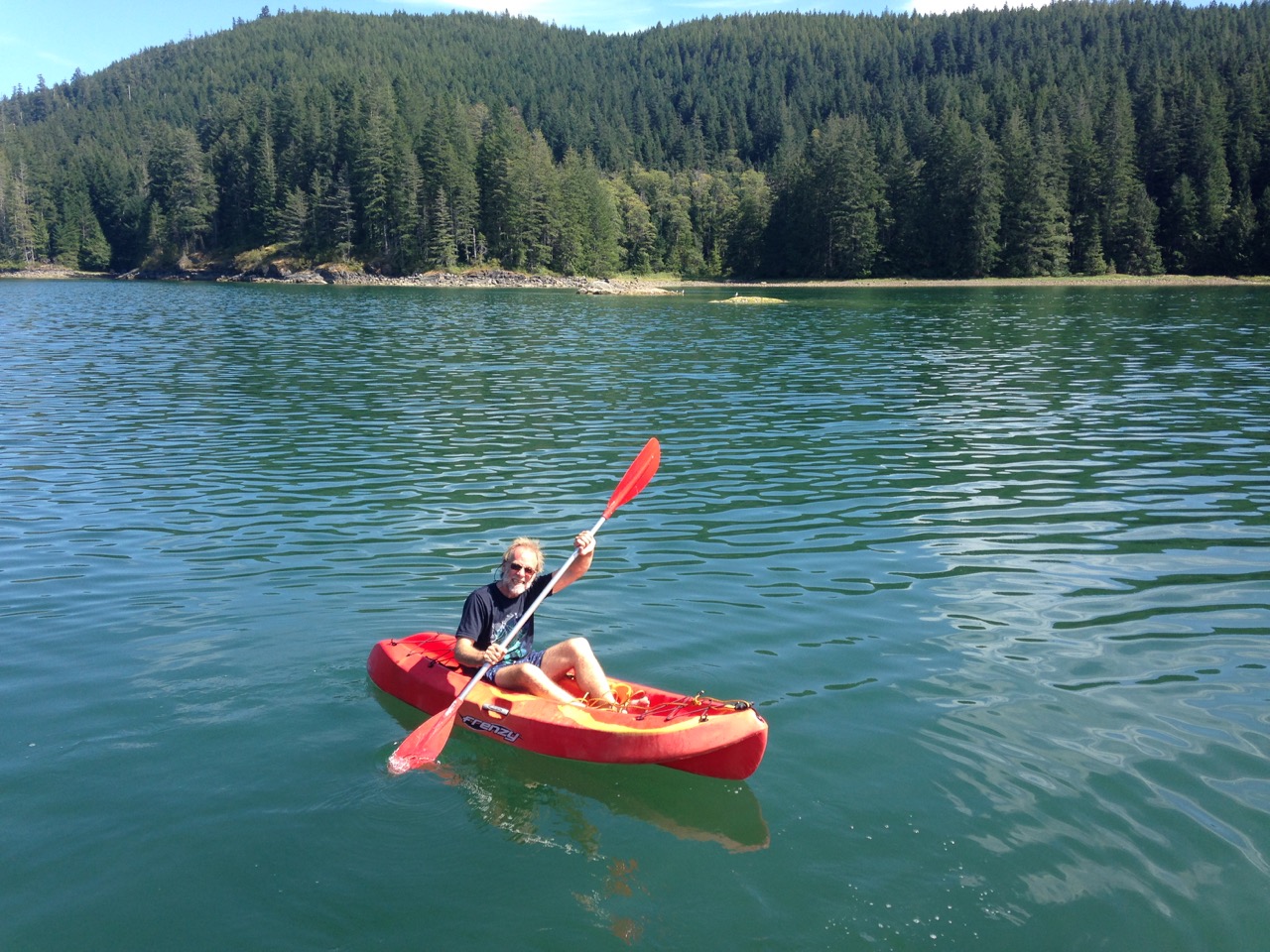 The next day we had to pass through one of the most dangerous passes in Canada, the Seymour Narrows
The next day we had to pass through one of the most dangerous passes in Canada, the Seymour Narrows
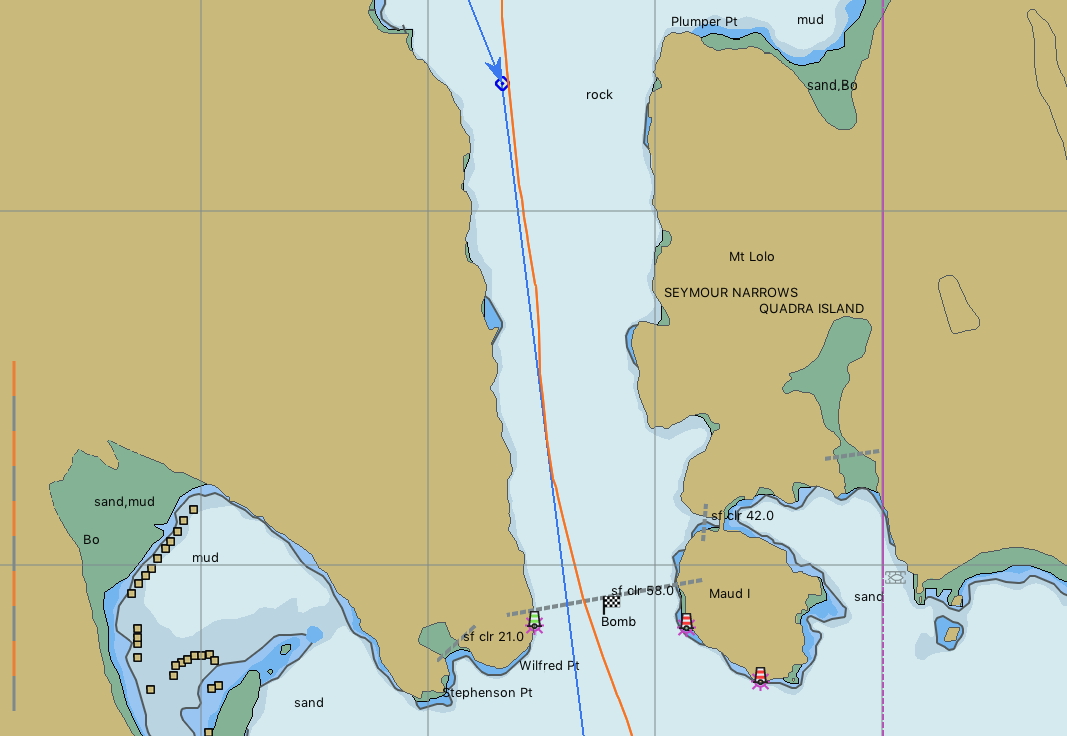
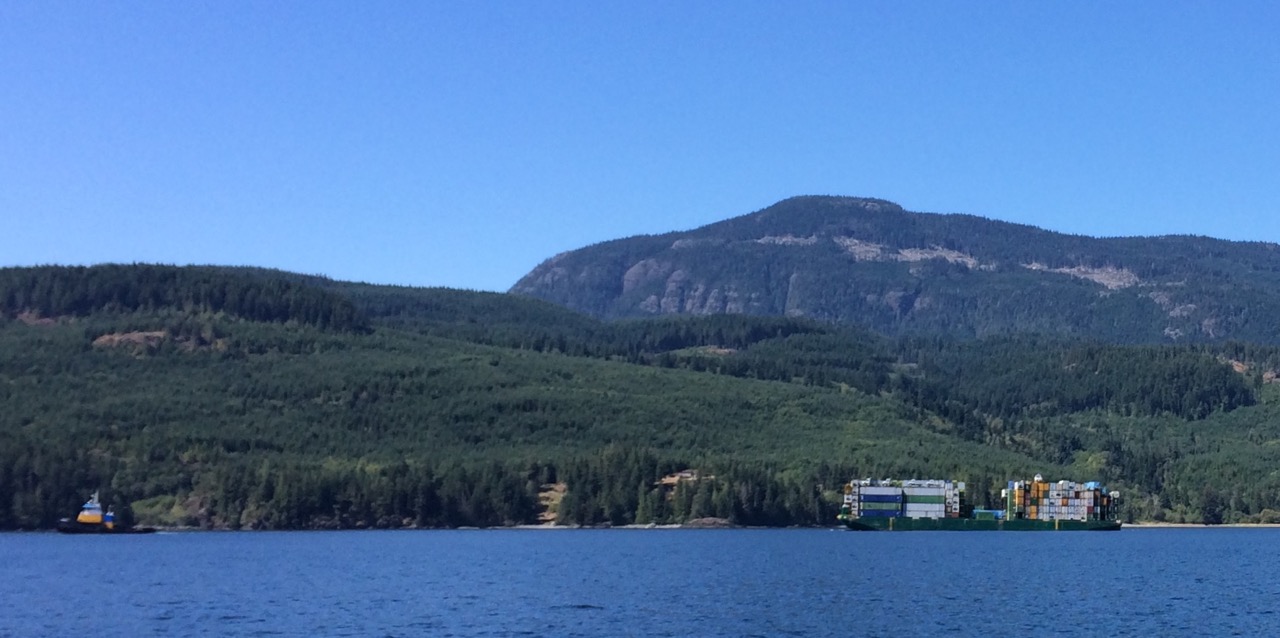

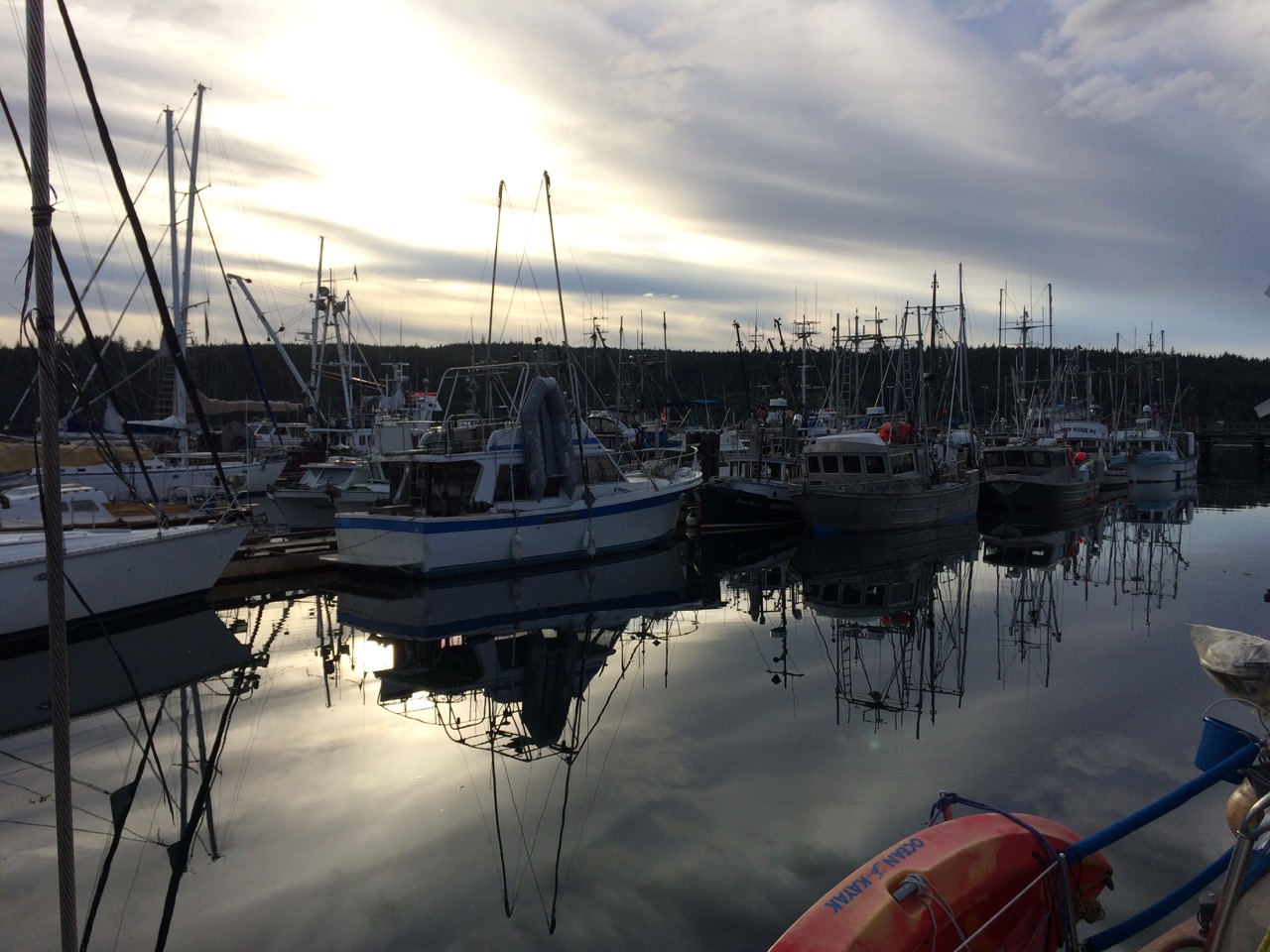 A Gill-Netter is a certain type of fishing boat/style where a long net, about 1/4 mile, is let out from the stern of the boat from a large drum and then the boat and the net drifts. The boat can be pointing at the net or away from it, or anywhere in-between, meaning that spotting the boat doesn’t give us a clue as to where the net might be. I have just had a good chat with the skipper of the boat and he told me that tomorrow the fisheries open for a three day window, and that he, and hundreds like him will be rushing to the water, in particular the straits and passages we are going through, and there will be Gill-Netters everywhere. His advise to me is to stay 1/4 mile away from every fishing boat, which is easier said than done.
A Gill-Netter is a certain type of fishing boat/style where a long net, about 1/4 mile, is let out from the stern of the boat from a large drum and then the boat and the net drifts. The boat can be pointing at the net or away from it, or anywhere in-between, meaning that spotting the boat doesn’t give us a clue as to where the net might be. I have just had a good chat with the skipper of the boat and he told me that tomorrow the fisheries open for a three day window, and that he, and hundreds like him will be rushing to the water, in particular the straits and passages we are going through, and there will be Gill-Netters everywhere. His advise to me is to stay 1/4 mile away from every fishing boat, which is easier said than done.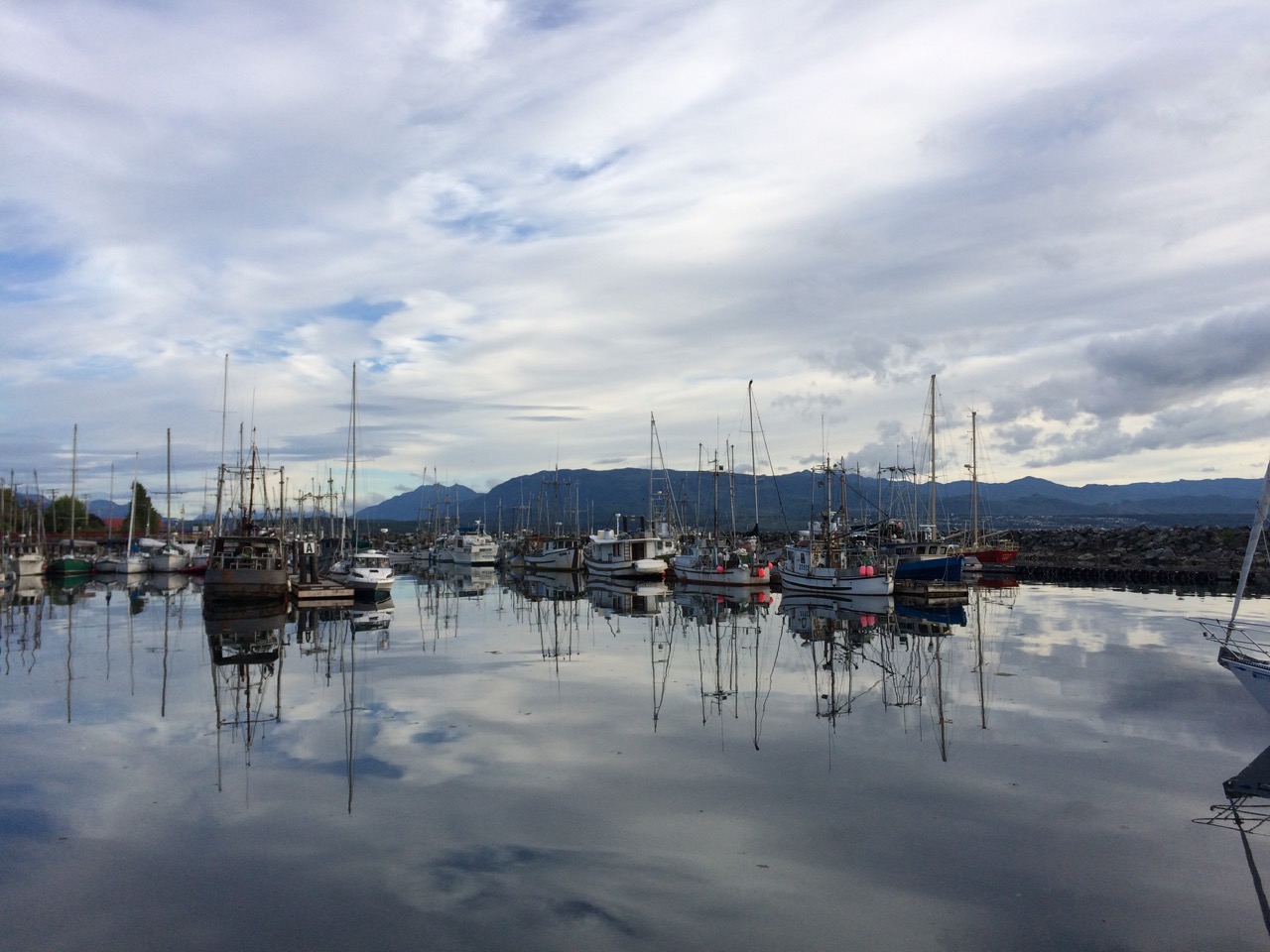 The Inside passage is a maze of waterways, rivers, straits, passes etc that run from Seattle all the way up to Alaska, about 1000 miles in total, most of it is protected from the Pacific gales and provide a safer route along the coast in rough weather. We joined the passage at the top of Vancouver Island and we are now working our way south, hoping to be in Seattle for the 17th when there is a rally/meet up of boats & owners of boats designed by Bob Perry, the designer of our boat. It’s an annual event, and it seems daft not to attend as we are so close. However it does mean we need to rush a little to get there.
The Inside passage is a maze of waterways, rivers, straits, passes etc that run from Seattle all the way up to Alaska, about 1000 miles in total, most of it is protected from the Pacific gales and provide a safer route along the coast in rough weather. We joined the passage at the top of Vancouver Island and we are now working our way south, hoping to be in Seattle for the 17th when there is a rally/meet up of boats & owners of boats designed by Bob Perry, the designer of our boat. It’s an annual event, and it seems daft not to attend as we are so close. However it does mean we need to rush a little to get there. One of the big problems of the inside passage is that the Pacific Ocean sea level rises and falls by about 4 metres every 12 hours, and it rushes into, then out of the Inside passage. The water races through the myriad of waterways, and where it is narrow, and especially where it is shallow, or there are underwater features like mini mountains, it can get quite crazy. It’s not a gentle river by any means, in some places it’s very deep, I’m not sure exactly, but when Captain Vancouver on Discovery first surveyed it for our Queen back in 1792, while looking for a north west passage, they would swing the lead deep into the water and his crew would often shout ‘No Bottom Found’, presumably relating to the water depth.
One of the big problems of the inside passage is that the Pacific Ocean sea level rises and falls by about 4 metres every 12 hours, and it rushes into, then out of the Inside passage. The water races through the myriad of waterways, and where it is narrow, and especially where it is shallow, or there are underwater features like mini mountains, it can get quite crazy. It’s not a gentle river by any means, in some places it’s very deep, I’m not sure exactly, but when Captain Vancouver on Discovery first surveyed it for our Queen back in 1792, while looking for a north west passage, they would swing the lead deep into the water and his crew would often shout ‘No Bottom Found’, presumably relating to the water depth.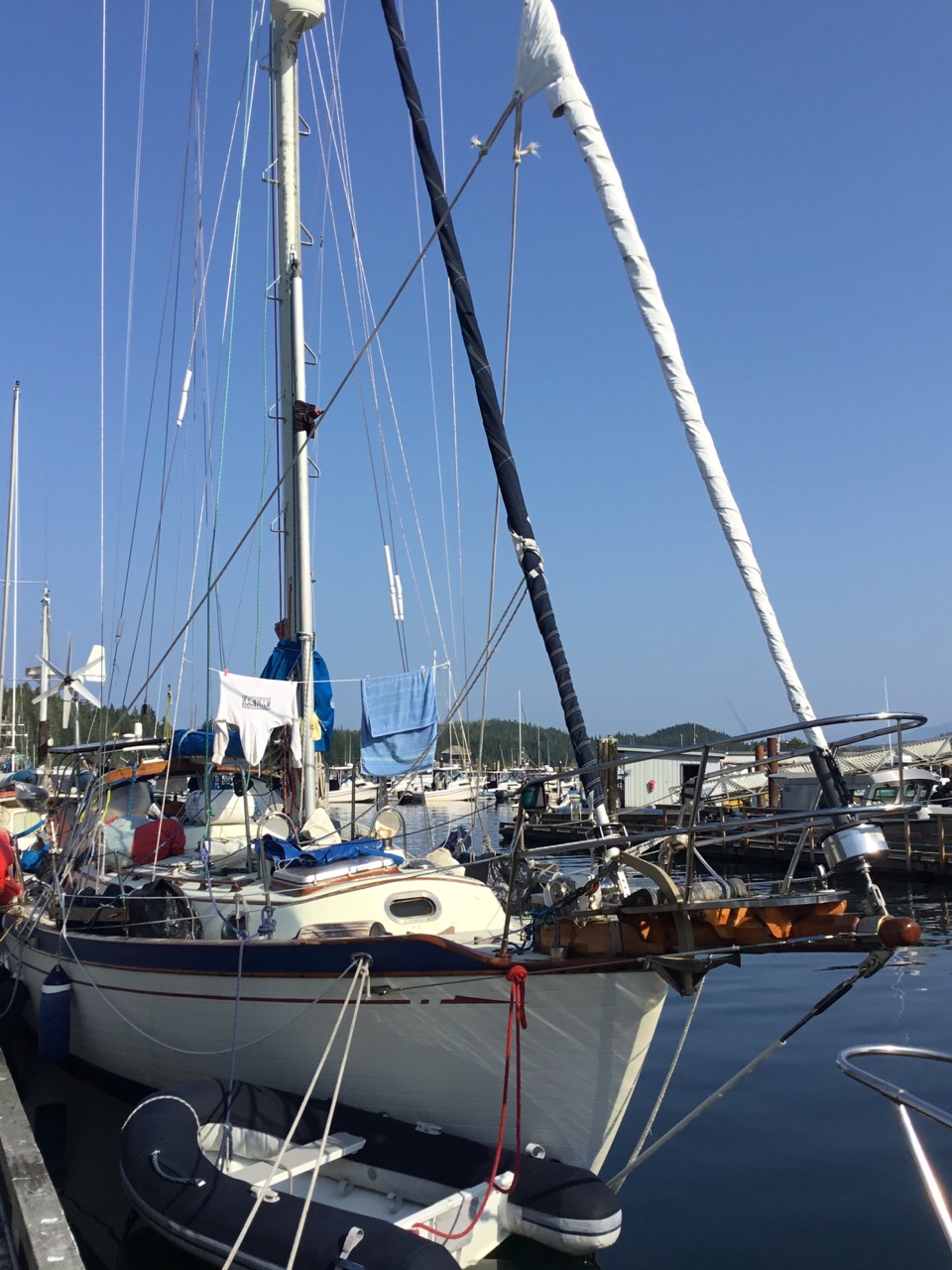
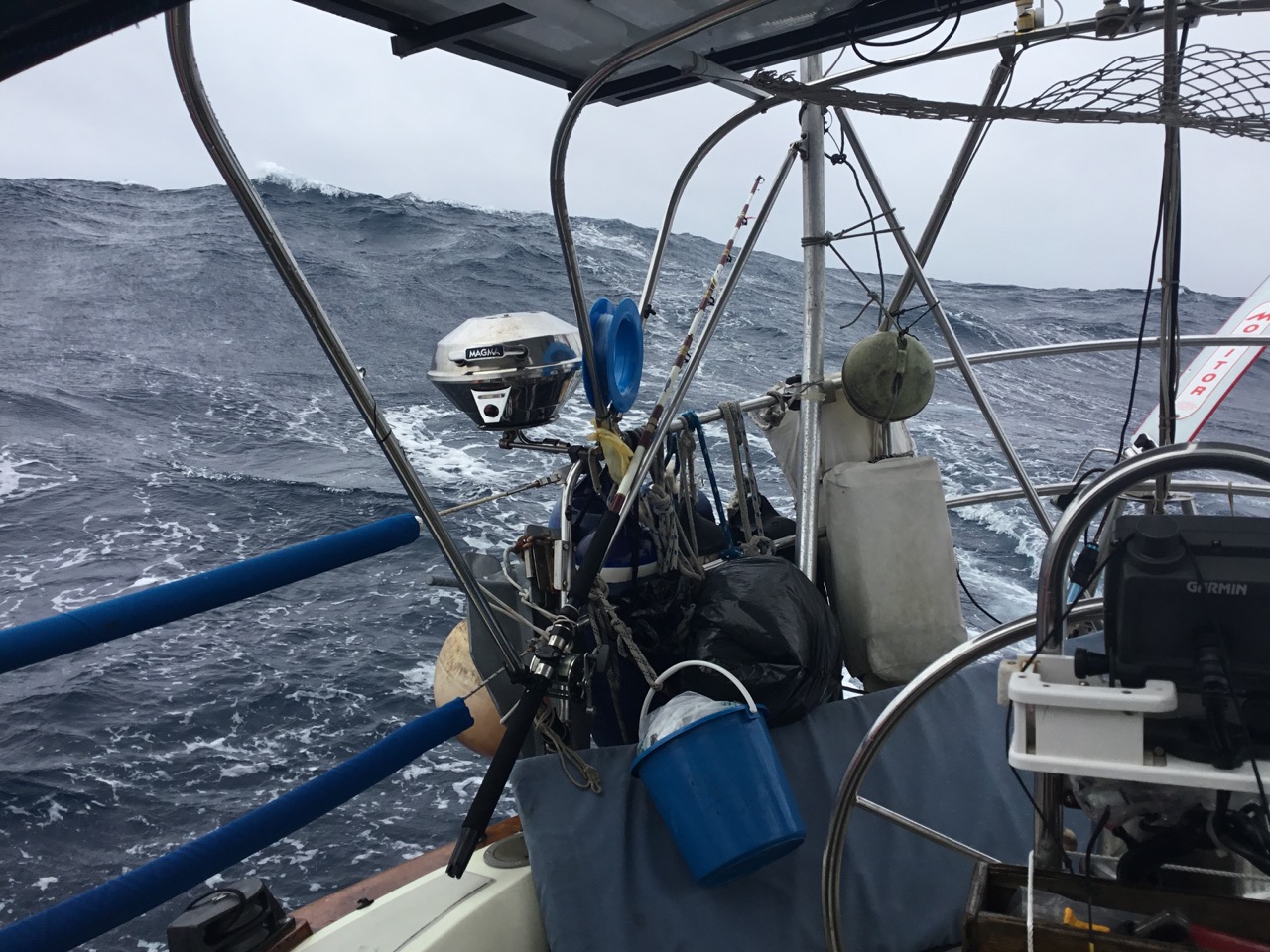


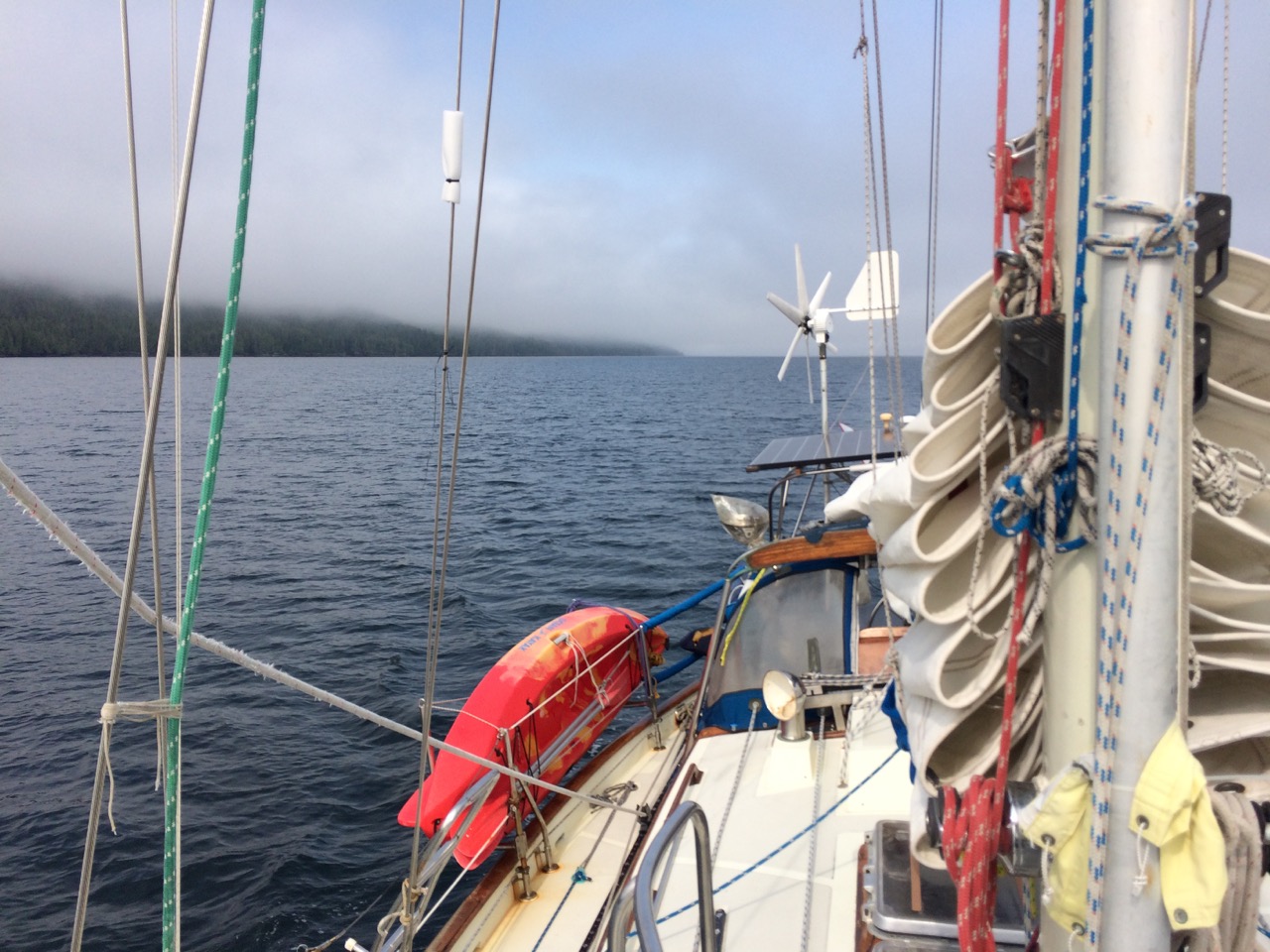
 One of the clearer days in the Pacific
One of the clearer days in the Pacific One of the rougher days.
One of the rougher days.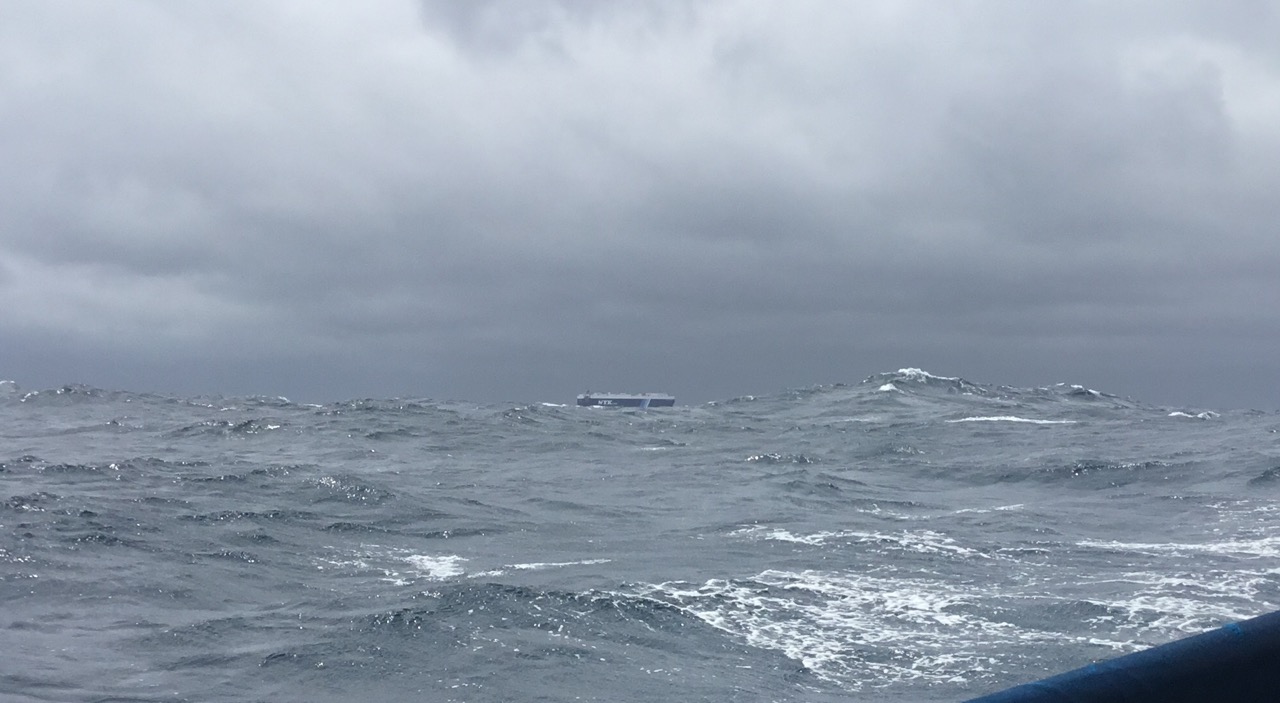 The damage caused to the dodger by the crazy sheet car whipping around
The damage caused to the dodger by the crazy sheet car whipping around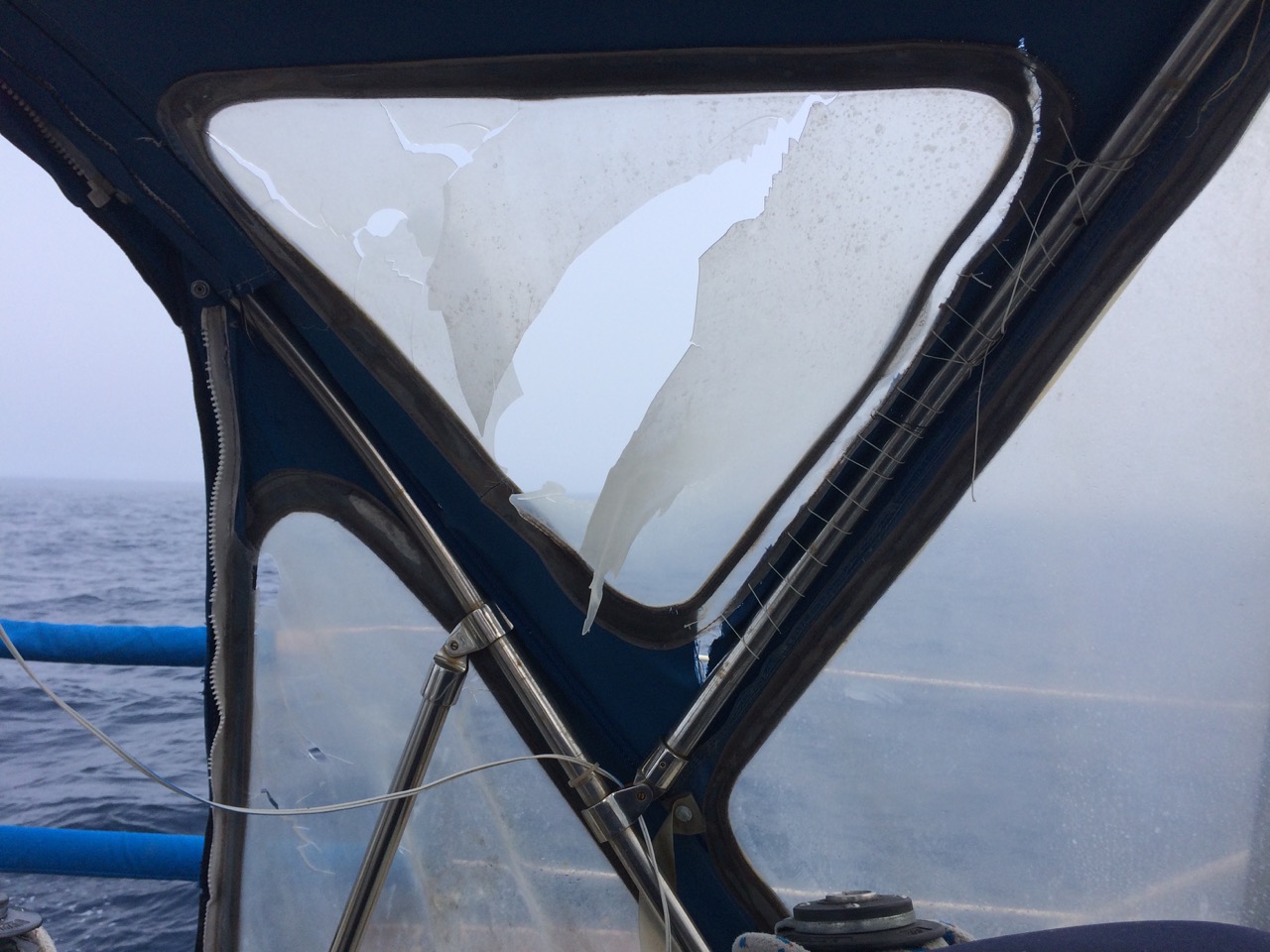 Sea otters
Sea otters The Fishermans Wharf
The Fishermans Wharf
